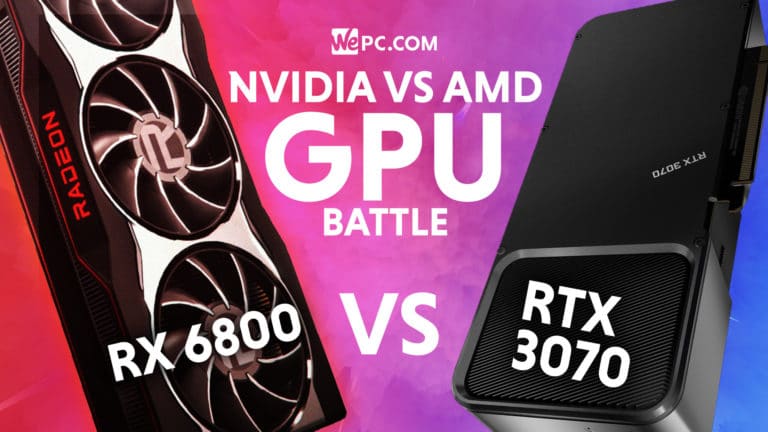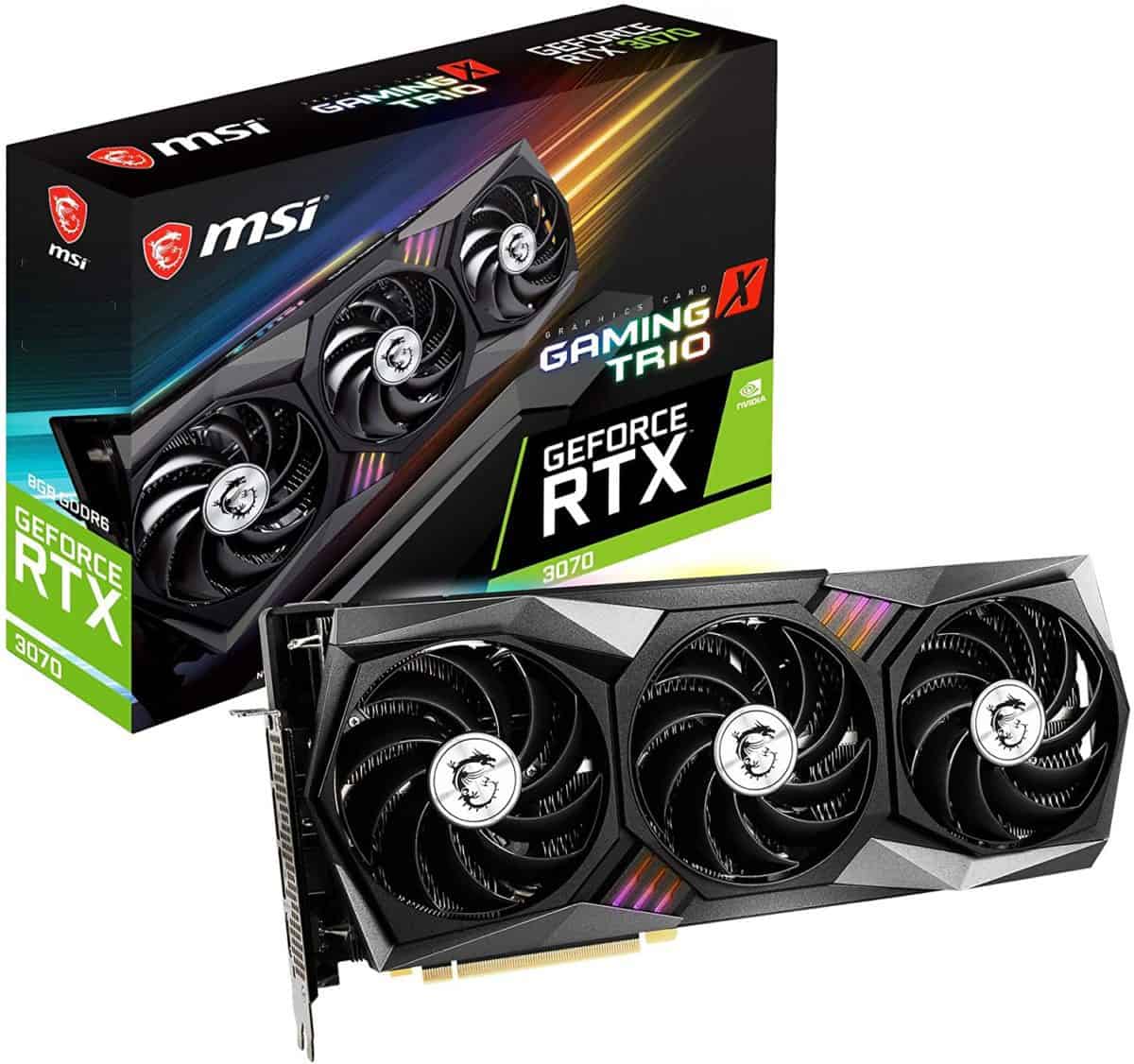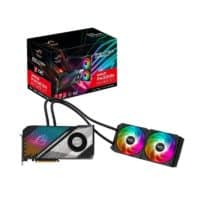AMD RX 6800 Vs Nvidia RTX 3070: Best Mid-Range GPU Comparison
With AMD boasting new highs in gaming performance, we take a closer look at the facts when comparing the RTX 3070 to the RX 6800

At long last, AMD finally unveiled their RX 6000-series GPU lineup, proudly boasting some impressive performance benchmarks that could see team red take the gaming crown for the first time in almost a decade.
Whilst not everyone is sold on AMD’s benchmarks, mainly thanks to the bespoke conditions AMD tested their GPUs in, it has still left many people asking the question – what is better, the RTX 3070 or AMD’s RX 6800?
In today’s article, we’ll be taking a closer look at both GPUs to see which should reside in your next gaming build. We’ll be compared price, performance, and overall specs in order to get a more informed decision on which you should choose.
So, with plenty to get through, let’s waste no further time and dive straight into it!
RX 6800 Vs RTX 3070: The Specs
As you can see, there are some fairly substantial differences that separate the two GPUs. However, comparing them side-by-side isn’t as straight forward as you might think. For the most part, many of the performance specs are bespoke to each GPU (thanks to the way each individual architecture works). So, how do we compare? Well, we’re going to look at the similarities – memory speed, capacity, bandwidth, and bus, alongside other factors like clock frequencies and pricings. We’ll then explore some of the individual features that may affect your purchasing decision.

MSI Gaming GeForce RTX 3070 Gaming X Trio

Clock Speed
1830MHz Boost Clock (OC)
VRAM
8GB GDDR6
Thermal Design
TORX Fan 3.0 cooling
Power Inputs
2 x 8-pin
Size
323mm x 140mm x 56mm
Stylish, gaming aesthetics
Strong materials and build design
High-end cooling solution
On the expensive side

ASUS AMD Radeon RX 6800 XT ROG Strix LC OC 16GB

Clock Speed (Base/Boost)
2110MHz/ 2360MHz
VRAM
16GB GDDR6
Ports
HDMI x 1 DP x 2 USB Type C x 1
Full-coverage gold plate
On-board cooling for power-delivery is handled by a blower-style fan and low-profile heatsink
600mm tubing for compatibility with EATX chassis and alternative mounts
Very fast card
Very expensive
RX 6800 Vs Nvidia RTX 3070: Memory & Clock Frequencies
One of the most substantial (and eyecatching) differences that can be found when comparing the RTX 3070 and RX 6800 is the memory. AMD has made huge strides in this area, equipping all their latest GPUs with 16GB of GDDR6 VRAM – that’s double what Nvidia’s alternative brings to the table. And unlike the other GPUs in the Ampere range, the 3070 doesn’t have the quicker GDDR6X VRAM to rely on.
The victories don’t stop there either, AMD’s RX 6800 also offers faster memory speed (16GBps over Nvidia’s 14GBps), and a comparable memory bus – making the standard memory bandwidth of the RX 6800 almost 15% greater than the RTX 3070. That said, thanks to AMD’s newly implemented Infinity Cache (128MB), the RX 6800 effectively has a memory bandwidth of almost three times that. What does all that mean for gamers looking to purchase this card? Well, we should expect a dramatic performance boost in memory-hungry games and resolutions, such as 4K. The additional VRAM on AMD’s side will also make modifying games in higher resolutions much more accessible – as more is also better.
Clock frequencies are another area where we can make direct comparisons between the RX 6800 and RTX 3070 GPUs. And once again, team red seems to be coming out on top.
AMD has, again, made huge leaps in this department – managing to raise clock speeds to an impressive 2,105MHz in boost mode. This is mainly thanks to the claimed 56% performance per watt improvements that come with the new RDNA2 architecture. When compared with Nvidia, that’s a jump of almost 400MHz, a difference that will surely see performance gains in gaming and workflows.
RX 6800 Vs Nvidia RTX 3070: Advanced Features
Whilst comparing each GPUs additional technologies isn’t a completely fair test, it’s still worth exploring as we can still speculate how each could affect the overall user experience.
Nvidia’s RTX 3070 Features
One of the main features a lot of people have been discussing since the Ampere GPU release has been the arrival of DLSS 2.0 – a technology that effectively boosts frame rates in AI-based super-resolution formats. This feature allows Nvidia GPUs to utilize a trained neural network that can upscale resolutions in real-time. This not only improves graphical fidelity but also boosts framerates exponentially when compared to the rendering of a non-upscaled image. The deep learning super sampling technology also works seamlessly with real-time ray tracing, taking away the majority of the performance penalty that usually comes hand-in-hand with RTX.
Whilst this is all very positive news for Nvidia, there is one major downside – compatibility. For DLSS 2.0 to work effectively, Nvidia has to train the AI on the super high-resolution images that are generated by a specific game engine. And with this being a relatively new technology, there are very few games that fully support the DLSS 2.0 feature – apparent by most third-party benchmarkers using Doom for their independent reviews.
Nvidia’s Ampere GPUs also come equipped with the now well-established NVENC stream encoder, enabling the RTX 3070 to generate streams from live gameplay with minimal performance penalties. Furthermore, RTX voice and RTX broadcast also use AI algorithms on Ampere GPUs for greater quality stream features.
AMD RX 6800 Advanced Features
On the other side of the theoretical pond, AMD offers up new features such as Smart Access Memory, Rage Mode, and DX12 Ray tracing.
In potentially more sensible fashion, AMD is instead focusing on raytracing via the DXR API medium – a more widely adopted protocol supported by DX12. This is something that RTX cores will be able to use in the coming years, meaning we’ll soon see the raytracing feature become standard across most modern titles.
Alongside this, AMD is now boasting two brand new features unique to AMD GPUs – smart access memory and rage mode. When Dr. Su unveiled the new RDNA2 GPU lineup, almost every side by side comparison made with Nvidia alternatives was performed under the influence of these two new features.
Smart access memory is a new technology that allows greater communication between AMD CPUs and GPUs, allowing the CPU to share the GPUs memory for greater performance gains. It also allows the sharing of the 6000 series’ newly implement Infinity cache, reducing buffering and latency.
Rage mode is a much more simple concept, and for all intents and purposes is a quick overclock button that can be found within the Radeon software package. Once switched on, it effectively unlocks every last bit of overclocking headspace found within that particular GPU. Not only does this increase overall gaming performance, but it also puts it head and shoulders over the competition when comparing clock frequencies.
RX 6800 Vs Nvidia RTX 3070: Pricing And Availability
Now that AMD’s RX 6000-series GPUs have launched, we can finally talk about availability and pricing. Specifications aside, this is potentially the most important factor when it comes to most people’s purchasing decision. Annoyingly, each brand seems to have priced their GPUs extremely well – making the choice between the RX 6800 and RTX 3070 that little bit harder.
When looking at the cost of these two GPUs side by side, the RX 6800 does come out on top. That’s right, for the first time in a good while, AMD isn’t undercutting the competition. They’re showcasing their strengths and equipping the latest GPUs with a price tag that matches – fair play. The RX 6800 is roughly $50 more than the Nvidia, which really is quite competitive when you consider the potential performance gains you might experience when choosing team red of team green.
Furthermore, thanks to the shambles that was the RTX 30-series launch, even users that want to purchase a 3070 GPU simply can’t. Since the release of the new GPUs, we’ve only seen limited numbers become available to the public. Most retailers have been forced to reduce sales to 1 per person, allowing as many people to get their hands on one as physically possible.
Final Thoughts
So, which one should you go for? Is it the AMD RX 6800 or the RTX 3070? Well, I suppose that comes down to a couple of fundamental factors.
Firstly, let’s start with AMD. If you’re an avid fan of AMD’s components and you plan on purchasing one of the latest 5000-series CPUs, then a 6000-series GPU seems like the most obvious choice. Not only are you getting excellent value for money, but you’ll be able to boost performance thanks to new features such as smart access memory and rage mode.
However, if you’re still using an Intel chip, the performance gains probably aren’t going to be as impressive as AMD says. Users utilizing an Intel CPU will not be able to use smart access memory, meaning they’ll naturally get around 5-10% less performance. Also, with features such as DLSS 2.0 and RTX broadcasting, the Nvidia RTX 3070 could suit other users slightly more than AMD’s alternative.







